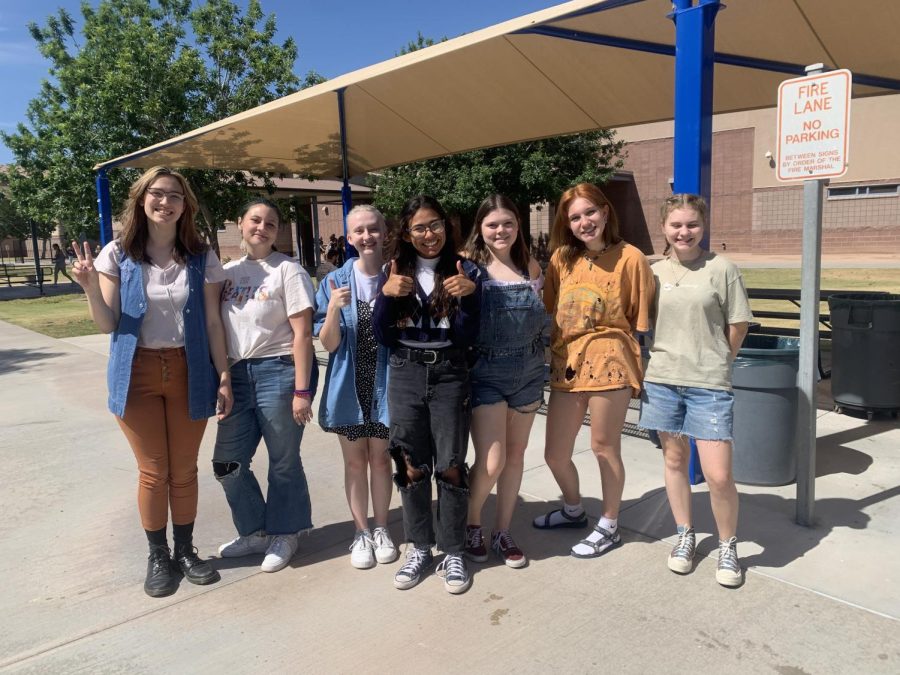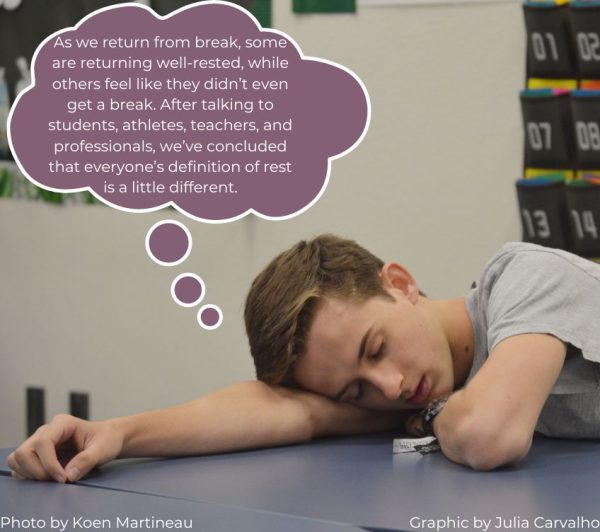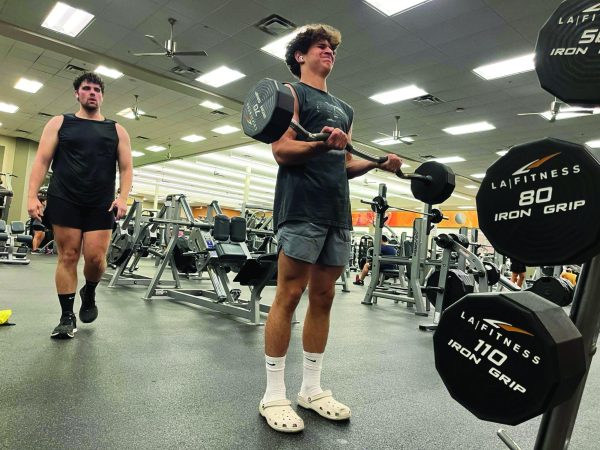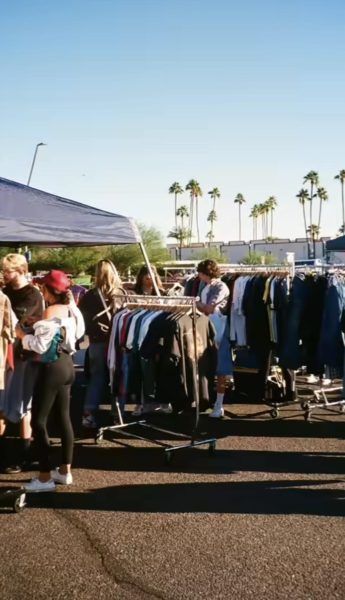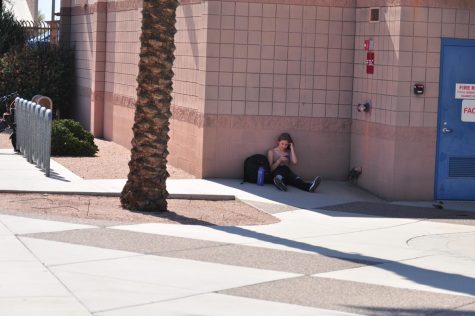Sustainable summer fashion
Members of the Environmental club show off their summer fashion choices while staying sustainable and environmentally aware. By sourcing clothes from pre-existing means such as thrifting, teens can stay fashionable and reduce their waste intake.
With the shift in seasons, from hot to even hotter, it is only natural for wardrobe and fashion trends to reflect the change as well. However, in an era where $50 can get you a SHEIN package of clothes, this concept of buying a new wardrobe can have negative, if not disastrous effects, on the environment.
The standard childhood teaching of “reduce, reuse, and recycle” can and should apply to the fashion industry as well. Being sustainable does not have to be an impossible task, but something that every person can attain for, even in gradual ways.
The current trends in fashion could be summed up as denim shorts, floral prints whether in a sundress or skirt, crochet (ethically sourced), converse, shirts with cut-outs, baggy shirts, and oversized button-up shirts. However, any of these trends could be altered or adapted to make strides to a more sustainable future.
Reduce: The best way to limit overproduction of clothes is to simply limit the amount of stuff each person buys. Rather than going out to the mall and buying a haul of clothes to stuff an already full closet, there are different approaches to widen one’s fashion spectrum. Instead of buying new clothes, you can go to the thrift shop and peruse pre-existing clothes. Thrift shops have grown in popularity throughout recent years, so a variety of options ranging from Goodwill to Salvation Army. While it may take some digging, really unique and special pieces can be found and grown in one’s wardrobe.
Thrift shops are full of oversized button ups that can be worn with denim shorts to create a casual, comfortable look. The funny shirts that can always be found at a Goodwill can be a comfy oversized outfit.
Reuse: A great way to incorporate sustainability into fashion can be through the reusing of articles of clothing. Instead of purchasing more clothes for the summer time, use items you already have in a different way. If you have ever had a favorite shirt of your friends, swap clothes with people over summer to keep your wardrobe new and ever-changing. It can also help to reduce clothing waste by picking items that can be used in a variety of ways. The “basic” items can be essential to creating a summer look.
Buying plain items such as white and black tank tops, or universal denim can match with a plethora of options. In order to incorporate the floral print fad, a floral dress can result in the dress being worn in a variety of ways. The dress could be worn in its natural state, as a skirt with a shirt on the top, or as a shirt-tucked into shorts or jeans.
Recycle: Every person likely has a few shirts they never wear, or a pair of jeans that’s just a wee bit too short. Rather than tossing these items, they can be refurbished to fit current and more personal style trends. Instead of getting rid of jeans, they can be cut into shorts, or the current resurgence of “jorts”, mid-length shorts that are every mom’s go-to. By using pre-existing clothing in new ways, it can inject modernity and build an appreciation for the process and effort into revamping a garment.
Do not throw away that shirt with a stain on it! Rather, use bleach or tie-dye to create new patterns on clothing that would otherwise live out its life in the crevices of the closet. Garments that are not one’s personal style or ill-fitting can be cut and altered to create something that can enter the weekly outfit rotation. Older clothes can be easily embellished or altered with iron on patches or clothing dye to make it appeal more to its wearer.
With the effects of fast fashion becoming more and more apparent, doing little things can start a ripple effect that will allow for more change to come about. Whether big or little changes, being more conscientious of how each person is affecting their environment is crucial for a sustainable future.

Sophie Barkett is a junior at Perry High. This is her second-year writing in the newspaper, and she is the Reviews/ Opinions editor. Her beats this year...

